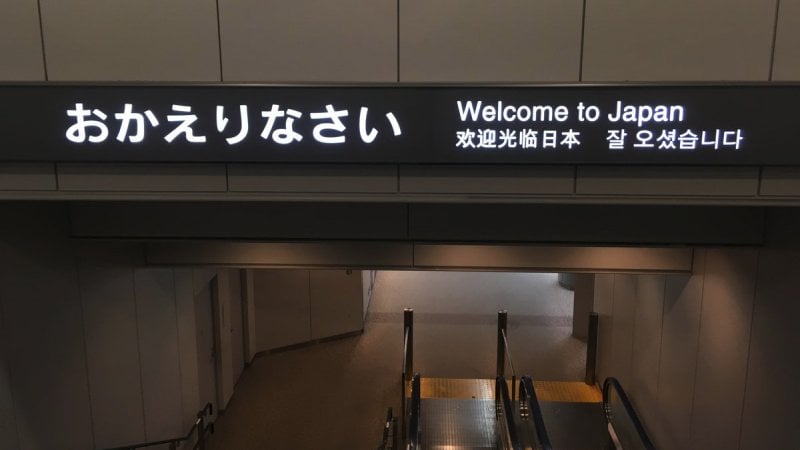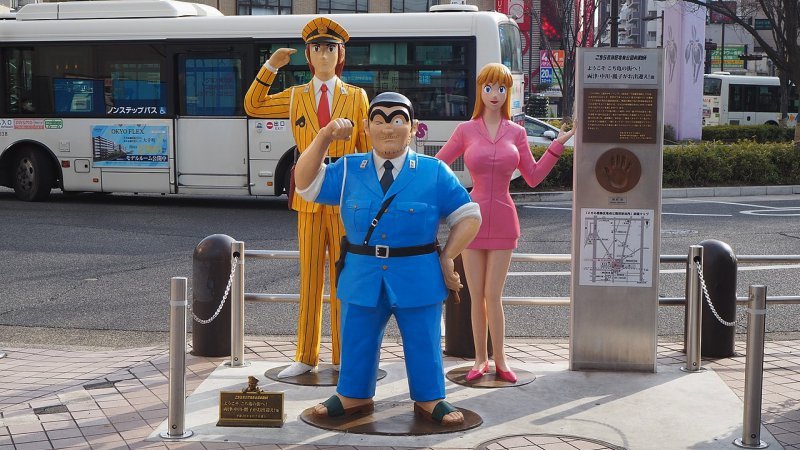Do you know how to say Welcome in Japanese? Do you know the meaning of the terms Okaeri, Youkoso and Irasshai? In this article we are going to look at all the ways to say Welcome in Japanese.
While in the Portuguese language we only know the welcome, in the Japanese language there are different ways of giving welcome, depending on the place and occasion.
For those who are unaware, the word “welcome” is used to express satisfaction and joy at the arrival of someone, demonstrating a hospitable reception to that person.
Also read other articles:
- Oishii! 16 Ways to Say Delicious in Japanese
- Daijoubu – Understanding the meaning and use of the Japanese word
Índice de Conteúdo
Irasshai and Irasshaimase
The word irasshaimase [いらっしゃいませ] it is a formal way of saying welcome to an establishment. Depending on the occasion you may hear its abbreviation Welcome being a little informal.
The word irasshai [いらっしゃい] comes from the verb irassharu [いらっしゃる] which can be written with the characters [入] which means to enter, [行] which means to go or go and iru [居] which means to be, to exist and to remain.
Saying irasshai is like asking someone to come in and be welcomed to our store or place. The “mase” [ませ] is used to increase the delicacy and politeness of a greeting, which means to please, considered a teineigo.

This word also conveys the idea of between and "feel free", "I'm available". Probably in some sentences you will notice that the translation of the word irasshai or irasshaimase will not literally mean a welcome. See some example sentences below:
毎度、またいらっしゃい
Maido kills irasshai
Thank you, come back often!
明日遊びにいらっしゃい。
Ashita asobi ni irasshai.
Please come and play tomorrow.
No need to respond when listening irasshai in stores, but you can bow your head in thanks.
Okaeri and Okaerinasai
This word is most used when you are arriving somewhere you have already been, such as your own home or a very visited business, where you already have intimacy with the owner.
When you walk into places like Maid-Café they welcome you with Welcome home, master. [おお帰りなさいませご主人様] which is a very formal way of saying welcome, simulating the nobles arriving at their mansions and being served by the maids.

"Okaerinasai" [お帰りなさい] derives from the verb "kaeru" [帰る] which means to return, where this expression can literally mean "welcome back". The abbreviated and informal form is just "okaeri" [お帰り].
Usually when someone comes home he says tadaima [ただいま] which is equivalent to “I arrived!”. The person who is at home usually says okaeri [お帰り]. Sometimes this word can appear in sentences where it exactly means “to come back”.
Welcome - Youkoso
This word literally means welcome or how nice to see you. This version is more generic and comes closer to the Portuguese language welcome. It is often used to present something.
The word youkoso comes from the verb yoku [良く] which means well. The koso [こそ] is a particle used to emphasize the previous word. Here are some example sentences:
- Nihon and youkoso [日本へようこそ] – Welcome to Japan;
- youkoso kikai and [ようこそ機械へ] – welcome to the machine;

The article is still halfway through, but we recommend also reading:
Other Ways to Say Welcome in Japanese
Below we will leave a list of words related to welcome or welcome. Hope you enjoyed the article. If you liked it, don't forget to share and leave your comments.
| Portuguese | Japanese | Romaji |
| Welcome, reception [する] | 歓迎 | kangei |
| welcome | 持て成す | motenasu |
| From English Welcome | ウェルカム | werukamu |
| Irasshai in Ryuukyuu dialect | めんそーれ | menso-re |
| Special treatment, warm welcome | 優待 | yuutai |
| Come | お出でなさい | oidenasai |
| Meeting, greeting, welcome | 迎い | mukai |
| Warm welcome, hospitable treatment; | 厚遇 | kougou |
| Welcome in Kyoto dialect | おいでやす | oideyasu |
パーティーに来たいと思う人は誰でも歓迎いたします。
Paatii ni kitai to omou hito wa dare demo kangei itashimasu.
Anyone who wants to come to the party is welcome.
Conclusion and Video Lesson
I hope this video helped you understand how to say Welcome in Japanese. That the differences between Youkoso, Irasshai and Okaeri have been clarified.
Finally, we recommend watching an explanatory video about Welcome in Japanese. We also encourage you to share the article with friends and read other articles on our site.







